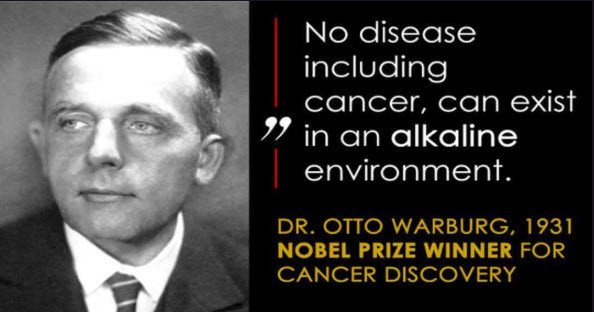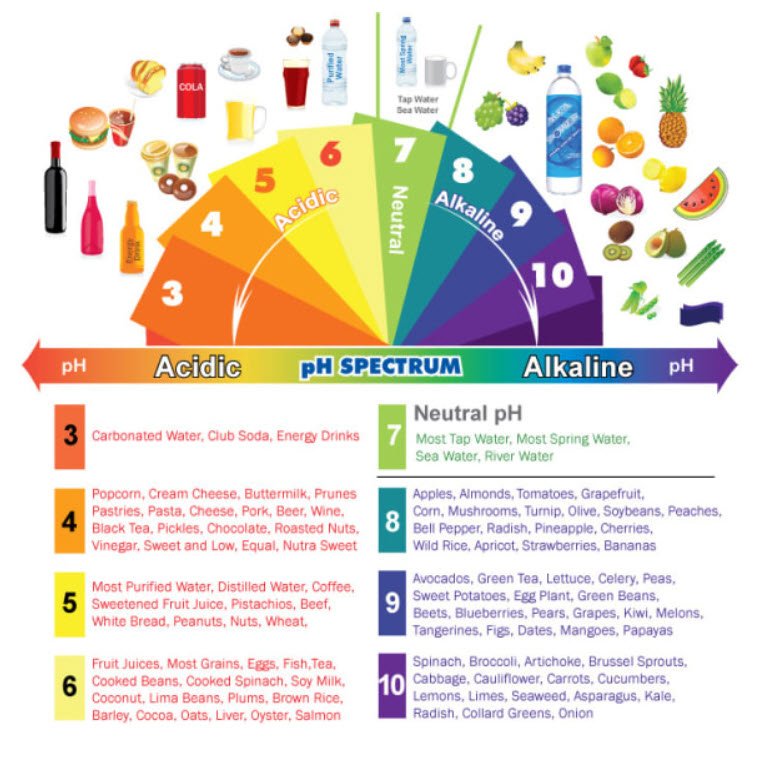Table of Contents
The debate between alkaline and acidic foods is interesting. Read on to find out if alkaline foods can be beneficial or detrimental to your health.
Maintaining a balanced pH level in the body is crucial for overall health. While the body naturally regulates pH, the foods we eat can influence this balance. Some foods are acidic, while others are alkaline, and understanding the difference can help optimize digestion, energy levels, and long-term wellness.
This guide explains the basics of pH balance, the difference between alkaline and acidic foods, and provides a comprehensive chart to help you make informed dietary choices.
Understanding pH Balance
pH, which stands for potential of hydrogen, measures how acidic or alkaline a substance is on a scale from 0 to 14. A pH of 0 to 6.9 is acidic, 7 is neutral, and 7.1 to 14 is alkaline.
The human body maintains different pH levels in various systems. Blood is slightly alkaline, with a pH between 7.35 and 7.45. The stomach is highly acidic, ranging from 1.5 to 3.5, which helps digest food. Urine pH varies based on diet, typically between 4.6 and 8.0.
While the body self-regulates pH, consuming too many acid-forming foods may strain this system, potentially leading to health issues over time.
Acidic vs. Alkaline Foods: What’s the Difference?
Foods are classified based on their potential renal acid load, or PRAL, which measures how they affect kidney acid excretion after digestion.
Acidic foods leave behind acid residues, which can lower pH levels. Alkaline foods leave mineral residues that help neutralize acids.
It’s important to note that a food’s natural pH doesn’t always match its effect on the body. For example, lemons are acidic but have an alkalizing effect once metabolized.
The Alkaline Diet: Does It Work?
Supporters of the alkaline diet believe that eating more alkaline foods can improve bone health, reduce inflammation, boost energy, and support immune function.
While research is mixed, some studies suggest that reducing acid-forming foods, such as processed meats and refined sugars, may benefit kidney and bone health. However, extreme dietary restrictions are unnecessary—balance is key.
Comprehensive pH Food Chart
Below is a list of common alkaline and acidic foods.
Alkaline Foods (pH 8 to 10)
Vegetables: Spinach, kale, cucumber, broccoli, celery.
Fruits: Avocado, lemon (alkalizing when digested), watermelon, berries.
Nuts and Seeds: Almonds, chia seeds, flaxseeds.
Other: Quinoa, herbal teas, apple cider vinegar (alkalizing effect).
Neutral Foods (pH 7)
Most natural fats like olive oil and coconut oil.
Whole grains such as brown rice and oats.
Legumes including lentils and chickpeas.
Acidic Foods (pH 3 to 6)
Animal Products: Beef, chicken, pork, dairy like cheese and milk.
Processed Foods: White bread, sugar, soda, alcohol.
Other: Coffee, peanuts, refined vegetable oils.
How to Balance Your pH Through Diet
You don’t need to eliminate acidic foods entirely. Instead, focus on these strategies:
1. Prioritize Alkaline-Forming Foods: Aim for 60 to 80 percent of your diet to consist of alkaline foods like leafy greens, nuts, and non-citrus fruits.
2. Limit Highly Acidic Foods: Reduce processed meats, sugary snacks, and excessive caffeine.
3. Stay Hydrated: Water helps flush out excess acids. Lemon water, despite being acidic, can have an alkalizing effect.
4. Monitor Your Body’s Signals: Fatigue, digestive issues, or frequent illness may indicate pH imbalance.
Final Thoughts
While the body naturally manages pH levels, a diet rich in alkaline foods can support overall health. Instead of obsessing over exact pH values, focus on eating whole, unprocessed foods and maintaining balance.
By incorporating more alkaline-forming foods and minimizing excessive acidic intake, you can promote better digestion, energy, and long-term wellness.
If you require assistance with this article, please do not hesitate to Contact Us











